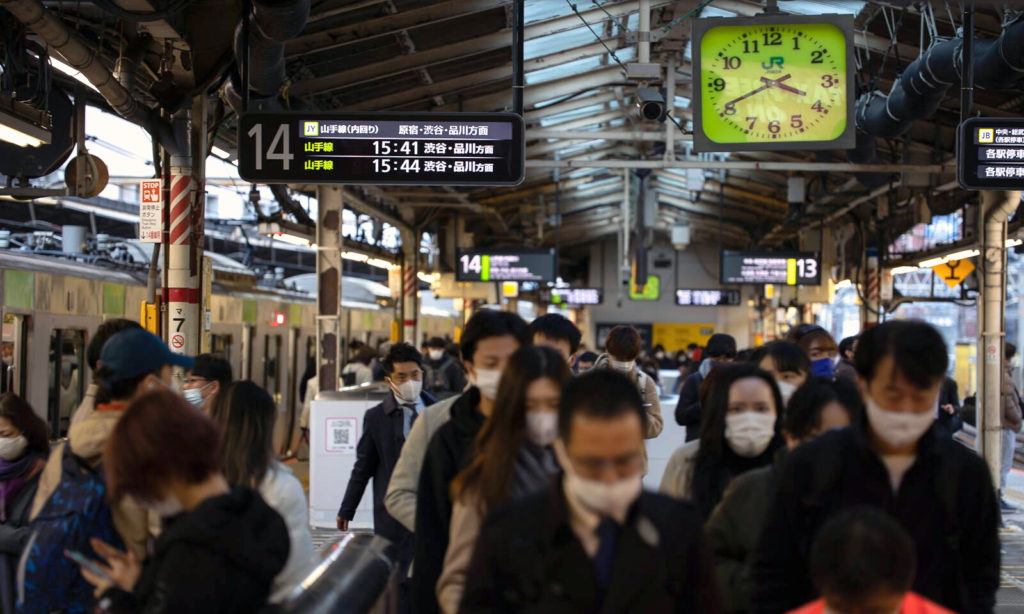Introduction:
While waiting for your train to arrive in Japan, you may notice bird chirping across the station. This birdsong is meant to be an audio guide to point the visually impaired towards the ticket gates and exits. Depending on the direction of the escalators, a different type of birdsong is being played – one for up-riding escalators, another for down-riding escalators, and a third one for bi-directional escalators. In addition, train stations play a different set of jingles not only for different train lines, but also for every station. Another jingle is played when the trains are arriving, when the doors are closing, and when the train is departing to decrease the chances of an accident occurring.
Audio cues (birdsong, jingles, announcements) in a Japanese train station.
Designing a More Accessible Society:
The social model sees society as an inaccessible world. In other words, it is not the individual that is the problem, but the environment. It is the job of designers to take into consideration accessibility from the very beginning, so that people with disabilities are able to freely participate in everyday activities, such as riding the train. In Japan, trains are the main mode of transportation due to the country’s lack of space for cars and low amounts of natural resources. By implementing bird sounds and jingles, a person who is visually impaired are able to navigate their way through the complexities of the station and make it to their destination. Contrary to the charity model, an ableist perspective that pities those with disabilities and assume that they are in need of special treatment, these audio cues enable the visually impaired to freely travel on their own and have agency.
The benefits of playing audio cues are not limited to just people with visual impairment – while it is easy to simply check the color of the train line or take a quick glance to see if the train is coming, the birdsong and jingles make life easier for all passengers. Say you were in the middle of reading something on your phone, the jingle will let you know that the train is approaching without you having to look up, so that you can continue reading uninterrupted. Another jingle is played until the door closes so you can tell if you have enough time to make it onto the train or not. As mentioned earlier, each station has a unique jingle so passengers can tell where they are without having to look at a sign or their surroundings. Of course, in addition to these jingles, a voice announces when the doors are about to open and close, what station you are at, and what the next station will be, so even if you are not familiar with the jingles yet, you are still able to easily determine where you are.
Furthermore, Japan is also home to some of the largest, most complicated stations in the world. It can be overwhelming to those new to the city, so following the birdsong can also provide support to both the visually impaired and visually unimpaired. The chirping sounds are meant to improve not just the physical experience of navigating Japanese stations, but also alleviate mental stress. Bird chirping is known to reduce stress, increase productivity, and make people happier, making it one of the most effective and beneficial types of sound for improving sound environments. The jingles were also composed with similar intent, created to not be too happy or too sad, but a good balance to induce a calming effect.
Shortcomings:
Admittedly, I actually hardly ever noticed the bird chirping sounds when I lived in Japan, especially in bigger or outdoor stations. As much as I like the idea of using sound to help guide one through the station, there is a lot of background noise that makes it rather difficult to hear the birdsong. What makes it worse is that, although there are guidelines regarding the use of birdsong as information signals, they are not always followed. Train staff may play lower than what is recommended since some people find them bothersome and unwanted. Perhaps a different sound could be used instead, and greater enforcement of playing it at a noticeable level is needed.
Conclusion:
Japan has taken accessibility for the visually impaired to another level with their ingenious use of sound for safety and convenience. Their culture of consideration is built into their cities’ infrastructure, showcasing how simple interactions have the power to change how we experience the world.
